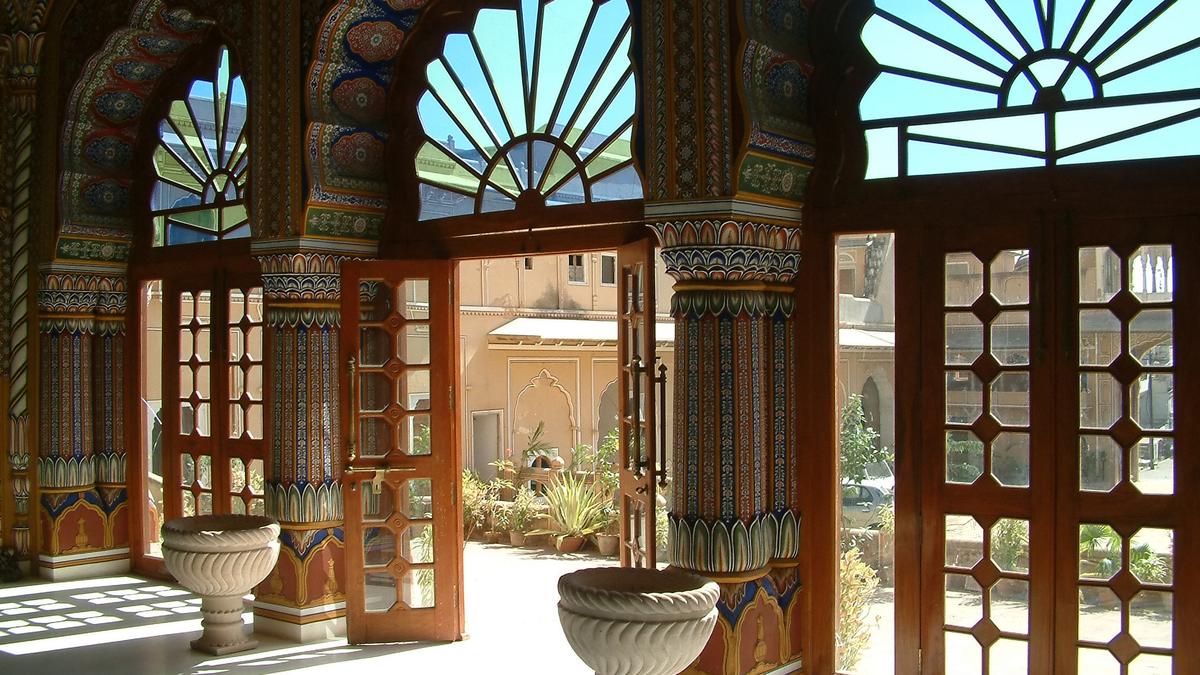Casa Feliz in Alibaug: received WA Awards in the category Architecture – Realised
| Photo Credit: Special arrangement
Even as I write this, the World Architecture Community Awards have introduced their next cycle — the 48th. The WA Awards have three categories in both Architecture and Interior Design — Realised (projects that are actually built), Designed (not yet built) and Student. Paulo Fernandes Silva of dEMM arquitectura, an architectural practice based in Portugal, says, “The WA Awards are highly prestigious in the architecture community, recognising innovative and impactful projects globally. The selection process involves a jury of Honorary Members and previous WA Award winners who select the top 10 projects.”
Aalloa Hills Residence in Gandhinagar: received WA Awards in the category Architecture – Realised
| Photo Credit:
Special arrangement
The 47th cycle announced this June saw three of the 10 winners hailing from India. By the Sabarmati River, near Gandhinagar (Gujarat), INI Design Studio has designed Aalloa Hills Residence, a wholly white minimalist net-zero building. In Alibaug, a coastal getaway near Mumbai, ADNP LLP’s Casa Feliz, a 10,000 sq.ft. home, monolithic in style, integrating clay bricks and metal elements. The third, Nokha Village Community Centre, is most unusual, which we will elaborate on further.
Finding oases
Nokha Village Community Centre in Rajasthan: received WA Awards in the category Architecture – Realised
| Photo Credit:
Special arrangement
Human beings have always ventured to the edge of geographical territories to settle down, even if they are harsh or unsustainable. In the sparse desert of Rajasthan, Mumbai’s Sanjay Puri Architects’ project for the Nokha Village Community Centre is a compact 9,000 sq.ft. subterranean structure that spirals out from the arid earth. This memorial for Padmaramji Kularia, envisioned by his family as a community hub for the district’s 144 villages, includes a museum that celebrates the local culture and a digital library for children. With a rooftop garden that offers panoramic views of the desert and recycled water coming from a neighbouring facility, the Centre is a forward step towards real integration of community.
The Nest by Sonara in Dubai.
| Photo Credit:
Special arrangement
Inspired by sand dunes, The Nest by Sonara in the heart of Margham Desert, a 30-minute drive from Dubai, is a series of 14 tent-like circular structures that blend into the natural topography. The design firm Gianni Ranualo Design from the UAE (they have another winning entry this cycle — Oasiz Madrid — a multi-use retail and leisure property in Spain) envisioned circular abodes made of stretched fabric and tensile steel structures that harvest rainwater and use solar energy.
Davood Boroojeni’s Western Village
| Photo Credit:
Special arrangement
Tehran architect Davood Boroojeni’s Western Village is one of the most interesting winners in the Architecture — Designed category. The architects have contemporised the Boneh Ghy, the pyramid-shaped element in traditional architecture that formed high spaces, to give the experience of increased spatial volumes. The result is an eclectic yet warm architecture that is responsive to the local environment by melding cultural and historical aspects.
What’s common about these designs is how the architects and the commissioners have sought to build homes and communities in remote regions, aiming for self-sustainable living. The spirit of human adventure and exploration comes alive through active and memorable spatial design.
A veritable treehouse and a family home
In an interview given to Antonio Magliozzi for the WA earlier this July, one of the founding masters of bio-architecture, Joachim Eble, says, “Everything we do as architects or urban planners must be directed towards bringing ‘nature back’. Bio-architecture mimics nature and attempts to create buildings in harmony with the environment with minimal negative impact to the ecosystem.
Architect Paulo of dEMM arquitectura says, “This year, there’s a strong focus on sustainable design and adaptive reuse of existing structures. People are increasingly looking for eco-friendly materials and energy-efficient solutions that reduce the environmental footprint of buildings.”
351 Foz Housing in Portugal
| Photo Credit:
Special arrangement
The direct interaction with Nature by extensive use of vegetation is at the core of dEMM arquitectura’s biophilic approach. Their winning entry 351 Foz Housing is reminiscent of the Hanging Gardens of Babylon, one of the Seven Wonders of the Ancient World, with its leafy terraces overlooking the Atlantic Ocean at Porto. The architect’s team is proud of this achievement that enhances the residents’ quality of life and also promotes environmental sustainability. Silva notes how new innovative methods for application of materials, particularly concrete and wood, allow architects to push limits with varied shape and thickness. The result is a language of fine but expressive contour lines with delicate textures yet apparent simplicity — a sophisticated and beautiful appearance. Says Silva, “Recognition of our project 351 Foz Housing underscores the importance of sustainable and meaningful design. It highlights our commitment to creating living spaces that are both functional and aesthetically pleasing, setting a benchmark for future projects.”
House Symbiosis in Greece
| Photo Credit:
Special arrangement
Increasingly, we find the desire for strengthening familial bonds in homes, especially multi-family units. House Symbiosis in Greece is designed to accommodate two sibling families. With arresting curvilinear geometry that recalls the whitewashed soft-contoured older Grecian homes, Direction Architects have created distinctive spaces that embrace both the traditional Greek family norms — similar to the close-knit family structure we find in India — and post-pandemic residential preferences.
The writer is a brand strategist with a background in design from SAIC and NID.
Related Topics
Source Homevior.in



